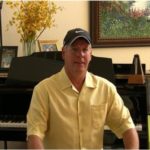The question “can you reverse Parkinson’s disease” is answered for you here.
What really matters when it comes down to a successful program of recovery?
What needs to happen to celebrate a reversal of Parkinson’s disease?
Results of my annual Parkinsons Recovery survey answer the question posed here – can you reverse Parkinson’s disease. What survey you ask?
Parkinsons Recovery Annual Survey
Each year during the holiday season I send out a question survey to members of the global Parkinsons Recovery audience. The question asked on the survey was:
Please list below natural therapies that have helped you experience relief from symptoms of Parkinson’s disease
I am always surprised and awed with the variety and diversity of therapies reported to have been helpful by members of the Parkinsons Recovery audience. When I examined results of the survey, I asked myself the question – what is the common theme here?
The answer quickly became crystal clear. Therapies reported to have been useful in reversing Parkinson’s symptoms turn down the volume of the sympathetic nervous system (which inflames symptoms) and switch on the parasympathetic (which soothes symptoms).
There is no single approach, method or therapy that permanently flips the switch. Each person discovers their own unique way to make this happen for themselves.
Dozens of therapies are reported to have been useful in this regard as reflected in my survey. They are now thoroughly listed and documented in my online course What Really Matters that rolls out a comprehensive explanation and review of each recovery option. Click on the What Really Matters Link below to register and take advantage of the 7 day free trial.
What Really Matters
While there are a surprising number of natural therapies that help, I wanted you to know about several in particular. Which ones among the many natural therapies will offer relief from your Parkinson’s symptoms? Consider the following possibilities that are reviewed in detail in this course.
Tumeric
Turmeric helps prevent depletion of dopamine, reduces oxidative stress and reverses inflammation
Magnesium
Magnesium is a natural muscle relaxant which helps address issues with rigidity and constipation.
Lion’s Mane Mushrooms
Lion’s Mane Mushrooms show welcome benefits as a therapy to reverse symptoms
Pulsed Electromagnetic Field Therapy (PEMF)
One reason detoxes are unsuccessful is compromised circulation. PEMF is an ideal therapy to address this problem.
Passion Flower
Some persons who experience neurological symptoms report Passion Flower has been helpful
Online Course Information
The new What Really Matters online course rolls out a comprehensive explanation and review of each recovery option. Click on the What Really Matters Link below to register and take advantage of the 7 day free trial.
What Really Matters
Eliminate Dairy
Research consistently reports that eating dairy is a significant predictor of who experiences symptoms of Parkinson’s.
CBD Oil
Research studies report that CBD helps to shut down anxiety. Once anxiety is brought under control, relief of symptoms follows.
Light Therapy – Photobiomodulation
Reports from persons who experience symptoms of Parkinson’s indicate light therapy has a beneficial impact on symptoms for 9 out of 10 users
Food as Medicine
Do you insist on only eating organic food? Great, but guess what? Eating organic is not enough. The food necessary for cellular healing is actually not available or sold in most food outlets.
N-Acetylcysteine (NAC)
N-Acetylcysteine (NAC) is a natural anti-oxidant that boosts glutathione levels which are usually dangerously low in persons diagnosed with Parkinson’s disease.
Low Dose Naltrezone (LDN)
Low Dose Naltrezone (LDN) is a prescription medicine that boosts the immune system. It is reported by some persons diagnosed with Parkinson’s to have been beneficial.
Secret to Recovery
When most people get sick they immediately gravitate toward finding something they can put into their body, but …
Importance of Balance in Diet and Lifestyle
Excesses in diet and lifestyle sustain tremors. When you eat mostly meat or carbs – you are out of balance. When you work 24/7 you are out of balance.
Inclined Bed Therapy
Improve circulation while you sleep by raising the head of your bed 6-8 inches.
Infusion of Energy
An Exercise to Kick Start Your Energy using your siren voice along with a simple movement of arms and body.
Fermented Papaya
Heavy Metal Toxicity
Types of heavy metal toxicity and methods to detox them
Problems with Tying Shoe Laces or Buttoning a Shirt?
Devices designed to make typing shoe laces or buttoning your shirt easier may not be in your best and highest good.
Vibration Therapy
Vibration Therapy offers symptom relief.
Yoga
Many individuals who experience symptoms of Parkinson’s report Yoga has been a life saver.
Emotion Code
Dozens of natural options have been shown to offer relief from symptoms of Parkinson’s disease. The listing of possibilities above offers a sneak preview of the many shown to be helpful.
Summary: Can You Reverse Parkinson’s Disease
My answer to the question is obviously yes.
Dozens options like the ones listed above are rolled out in my new “What Really Matters” online course. Each option is thoroughly documented, accompanied by the research evidence that evaluates each option’s efficacy for persons who experience Parkinson’s symptoms. Selections are inspired by what members of my audience report has helped them get relief from their symptoms. I list each option in the course because I know it has helped some people reverse their symptoms.
Click on the What Really Matters Link below to register and take advantage of the 7 day free trial.
What Really Matters
Robert Rodgers PhD
Founder
Parkinsons Recovery
https://www.parkinsonsrecovery.com
Olympia, Washington
877-526-4646
robert@parkinsonsrecovery.com







































